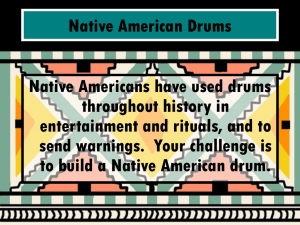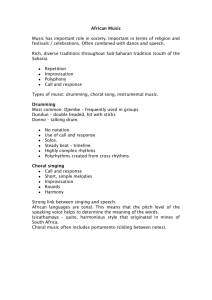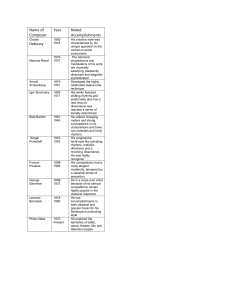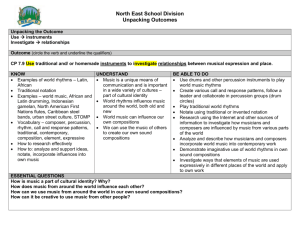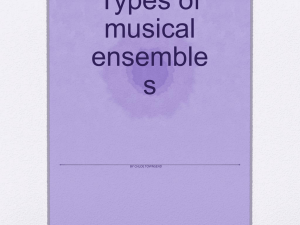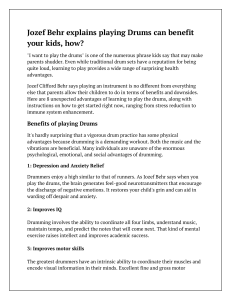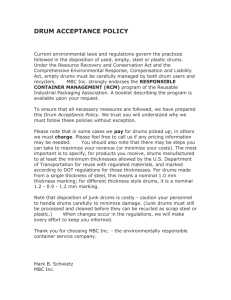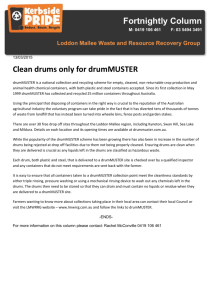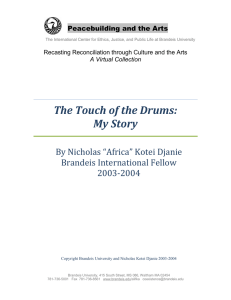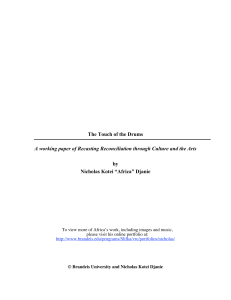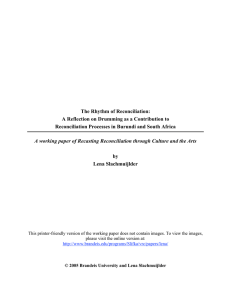T A ABLA AND ITS NCESTORS
advertisement
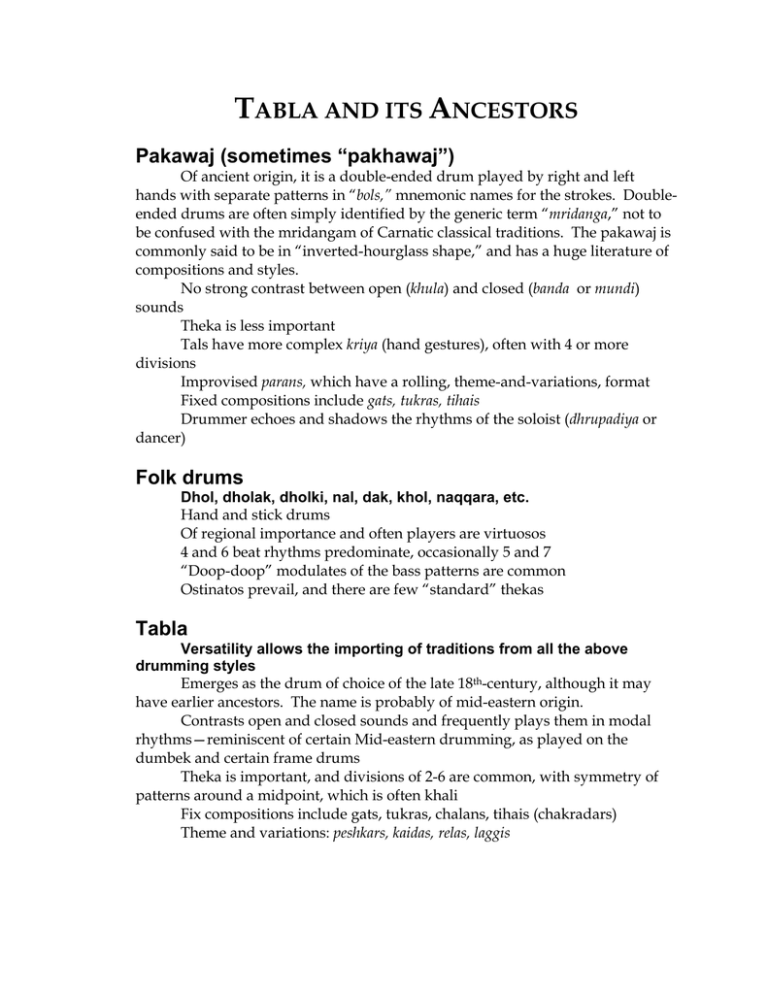
TABLA AND ITS ANCESTORS Pakawaj (sometimes “pakhawaj”) Of ancient origin, it is a double-ended drum played by right and left hands with separate patterns in “bols,” mnemonic names for the strokes. Doubleended drums are often simply identified by the generic term “mridanga,” not to be confused with the mridangam of Carnatic classical traditions. The pakawaj is commonly said to be in “inverted-hourglass shape,” and has a huge literature of compositions and styles. No strong contrast between open (khula) and closed (banda or mundi) sounds Theka is less important Tals have more complex kriya (hand gestures), often with 4 or more divisions Improvised parans, which have a rolling, theme-and-variations, format Fixed compositions include gats, tukras, tihais Drummer echoes and shadows the rhythms of the soloist (dhrupadiya or dancer) Folk drums Dhol, dholak, dholki, nal, dak, khol, naqqara, etc. Hand and stick drums Of regional importance and often players are virtuosos 4 and 6 beat rhythms predominate, occasionally 5 and 7 “Doop-doop” modulates of the bass patterns are common Ostinatos prevail, and there are few “standard” thekas Tabla Versatility allows the importing of traditions from all the above drumming styles Emerges as the drum of choice of the late 18th-century, although it may have earlier ancestors. The name is probably of mid-eastern origin. Contrasts open and closed sounds and frequently plays them in modal rhythms—reminiscent of certain Mid-eastern drumming, as played on the dumbek and certain frame drums Theka is important, and divisions of 2-6 are common, with symmetry of patterns around a midpoint, which is often khali Fix compositions include gats, tukras, chalans, tihais (chakradars) Theme and variations: peshkars, kaidas, relas, laggis
